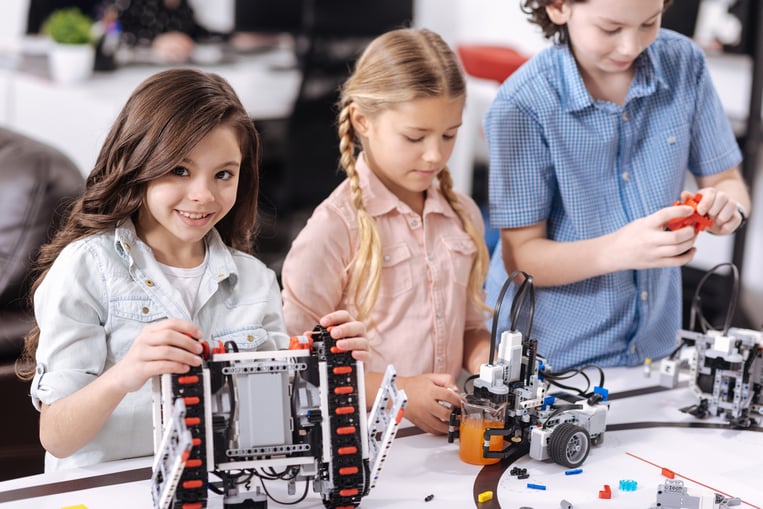
Math Assessment in California Schools: The Shift Toward Differentiated Instruction
Math assessment in California is changing. What used to be a compliance exercise or reporting tool is now becoming a...
Tahlea Jankoski | Published January 26, 2018

Do you want to help your students become more engaged in STEM education? Many teachers are finding student engagement can greatly increase when they are part of a makerspace environment. Makerspace is a term that is used in a variety of environments as a way to create an authentic learning experience. By definition, makerspace means 'student-centered learning'. A classroom may be set up with different makerspace workstations, or social spaces, where students create, brainstorm, share, and learn through hands-on learning. Through this form of learning, teachers partner with students to help direct their education and find solutions through their own problem-solving.
A makerspace should be a safe, collaborative environment. Science projects, engineering, woodworking, 3D printing, social issues, economics, and medicine are just a few of the many subjects that can be explored in a makerspace.
How does makerspace work?
Students become more involved in the set up and structure of the makerspace as teachers partner with them to create workstations for a wide-range of projects in the classroom. Students also voice their thoughts and participate in the learning process from start to finish. They focus on their individual projects and share what was discovered with the class.
Teachers creating a makerspace environment should:
A makerspace gives students an opportunity to be involved in STEM education on a daily basis through a blending of STEM curriculum and hands-on learning. For instance, in the Dive-In Engineering curriculum from STEMscopes, students are able to think like an engineer with the DIVE method—deconstruct, imitate, vary, and explore. This allows students to explore nine different engineering solutions in three different units to increase engagement and inquiry.
Students focus on real-world application and problem-solving while they create and explore in the makerspace, and teachers and educators use the makerspace model to help students use their imagination and see the connection between the lesson at hand and their own experiences.
The importance of makerspace
For many educators, the importance of makerspaces has had direct impacts on the way they are teaching. One teacher, Chad McGowan, at Ashland High School in Massachusetts told US News & World Report, " While students may not grow up to patent inventions, I believe that being knowledgeable of the technical world we live in, creating beyond the art classroom, and learning to be capable of working with tools in a team environment will help prepare our students for things we can't even imagine."
Researchers are finding that by implementing makerspace in STEM education, students can be more confident and prepared for their future education and professional pursuits in STEM.
More is possible when teachers implement a makerspace that lets students explore subjects that may otherwise be difficult to comprehend. Applying the makerspace method to STEM education can create a safe and collaborative place for students to enjoy and be more engaged in learning. Students who feel intimidated by STEM subjects can find more confidence through a makerspace environment with hands-on learning that is facilitated by their instructor.
Learn more about the Dive-In Engineering curriculum and download a free sample lesson now.

Math assessment in California is changing. What used to be a compliance exercise or reporting tool is now becoming a...

You know the moment: a student’s eyes light up when the science experiment fizzes or the math puzzle helps them...

STEM classrooms are full of different types of learners in the classroom, each with their own strengths and needs.
...